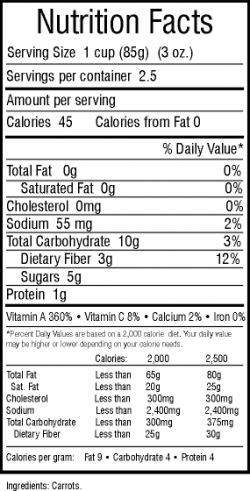If you want to lose and have a healthy body, it is important that you are mindful of the type of food you eat. If you are on a low carbohydrate food diet, then you need to make sure that the food you buy and consume meets the specifications of your diet.
We rely on food labeling to inform us about the content of our food. How accurate are these food labels? Do we take the time and effort to read and understand them before we buy the food?
What to Look at in Low Carb Food Labels
Some people argue that these days some of the labeling about so-called net carbohydrates in various low carbohydrate foods is simply designed to promote and sell more products. This is debatable. So the key question is:
 Do food labels actually provide the customers with the accurate information? There are also customers who simply do not look at the details about the contents of the food as stated on the labels.
Do food labels actually provide the customers with the accurate information? There are also customers who simply do not look at the details about the contents of the food as stated on the labels.
It is strongly recommended that you read the low carbohydrate food labels and understand them, so that you buy and eat what is suitable for you and your diet.
Once you start a diet, you must read the low carbohydrate food labels, and be informed about how the products are actually manufactured.
Some low carbohydrate foods are labeled low carbohydrate foods attain lower carbohydrates by their method of carbohydrate counting; and this is fact you must know.
Some of the labels list total carbohydrates, then eventually subtract certain items from the total to arrive at net, effectual, or usable carbohydrates.
This is the number that is always shown on the front of the food pack.
On food labels, do you know the difference between the total carbohydrate and the net carbohydrate?
There is a wording somewhere on the low carbohydrate package that explains the difference between these two.
Amongst the nutritionists and experts, there are some disagreements on the calculating method. Due to the fact that there is no legal definition of the term low carbohydrate or any official means of distinguishing it, most of the low carbohydrate food consumers are not well informed or given good advice.
In order for you to fully comprehend the low carbohydrate food labels, you must know the net carbohydrate content of the food item. Net carbohydrate content is derived from subtracting the grams of fiber and sugar alcohols from the total carbohydrates.
The reasoning behind this is that many of the low carbohydrate food manufacturers believe that fiber, while technically a carbohydrate, is not absorbed by the body, and therefore must not be measured as carbohydrate.
As far as sugar alcohols are concerned, the low carbohydrate food manufacturers believe that although these are technically carbohydrates and a source of calories, they have an effect on the blood sugar, and therefore must not be added up as carbohydrates.
Because some of the food labels are not very clear while some are not so easy to understand; it is recommended that instead of buying and consuming large quantities of processed low carbohydrate foods, such as low carbohydrate protein bars and low carbohydrate mixes or drinks, you are better off eating natural low carbohydrate foods such as vegetables, fruits, and whole grains.
If you want to eat low carbohydrate, it is better for you to get away from all processed foods, including low carbohydrate processed foods.
Alternatively, be very vigilant in reading food labels and make sure you understand them. Some of the net carbohydrate statements may be a marketing ploy, and the content label may not be essentially a good description of what’s actually contained in these food products.
It is your body, it is your health. Be vigilant in reading the low carbohydrate food labels and be informed about what you are eating!




